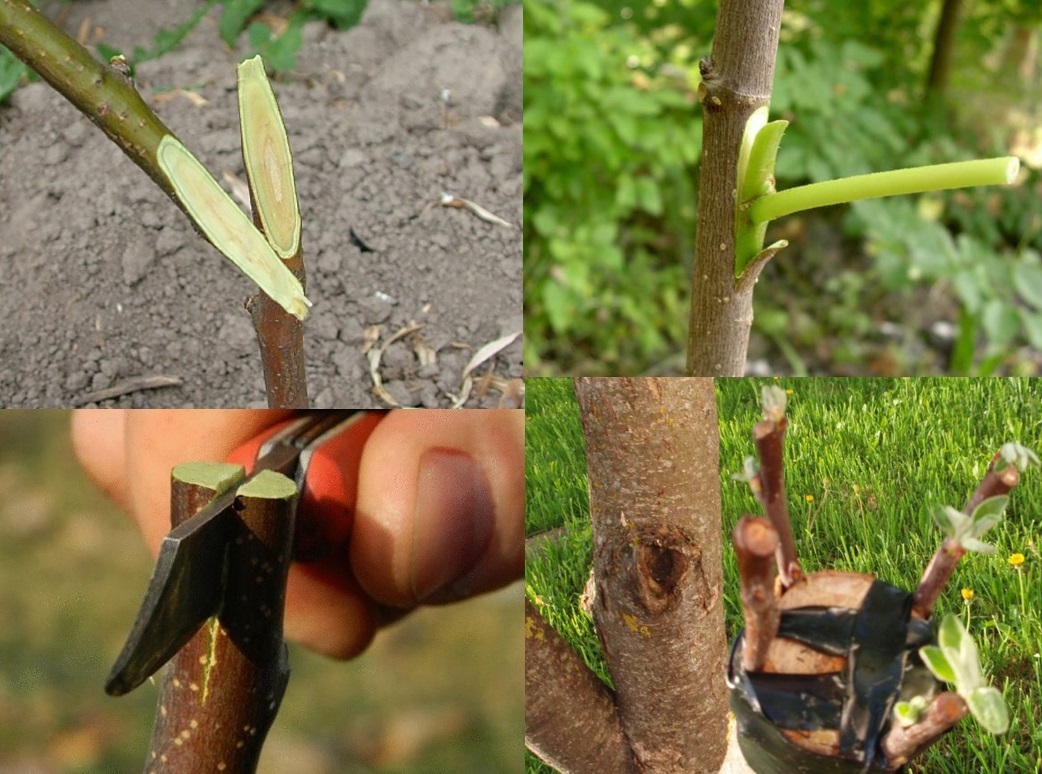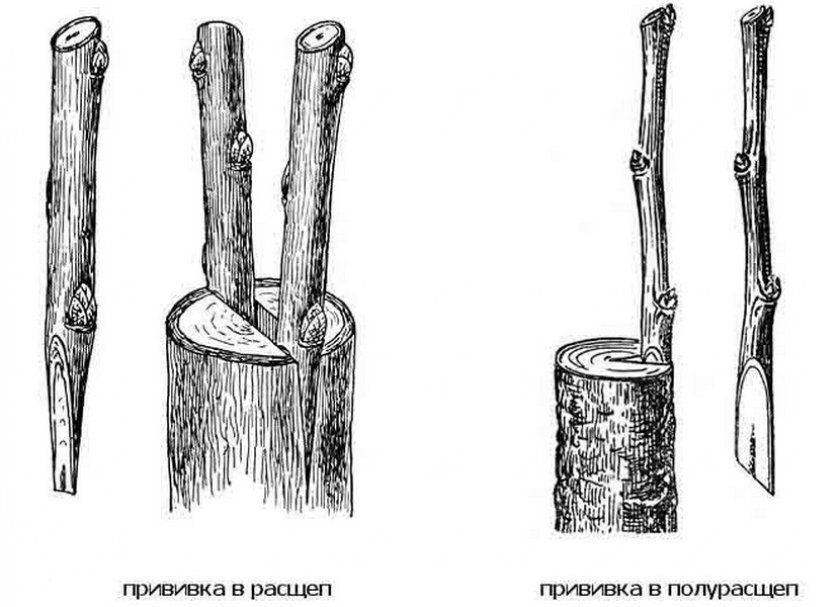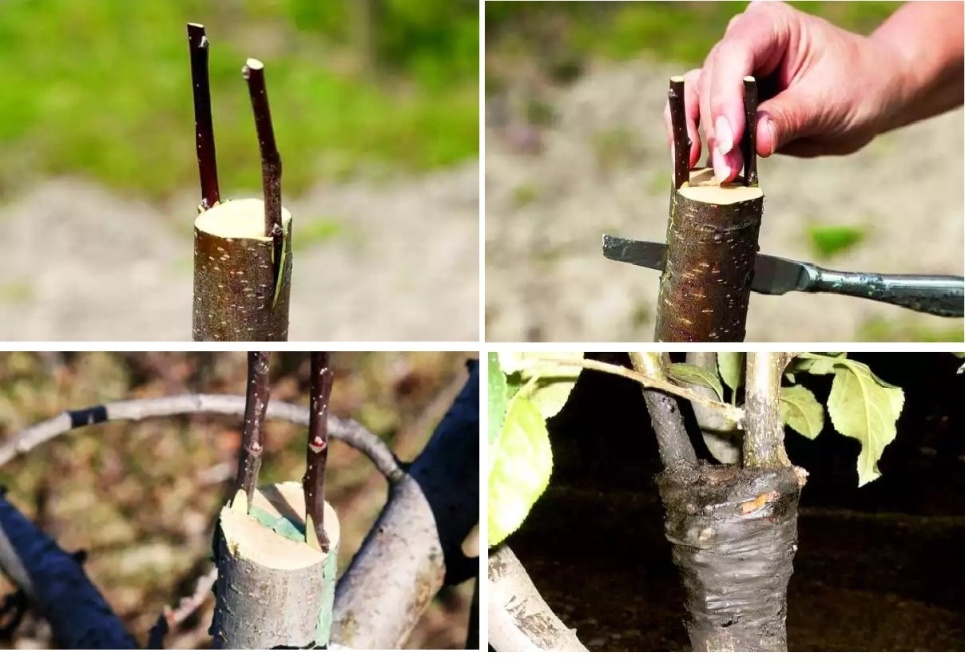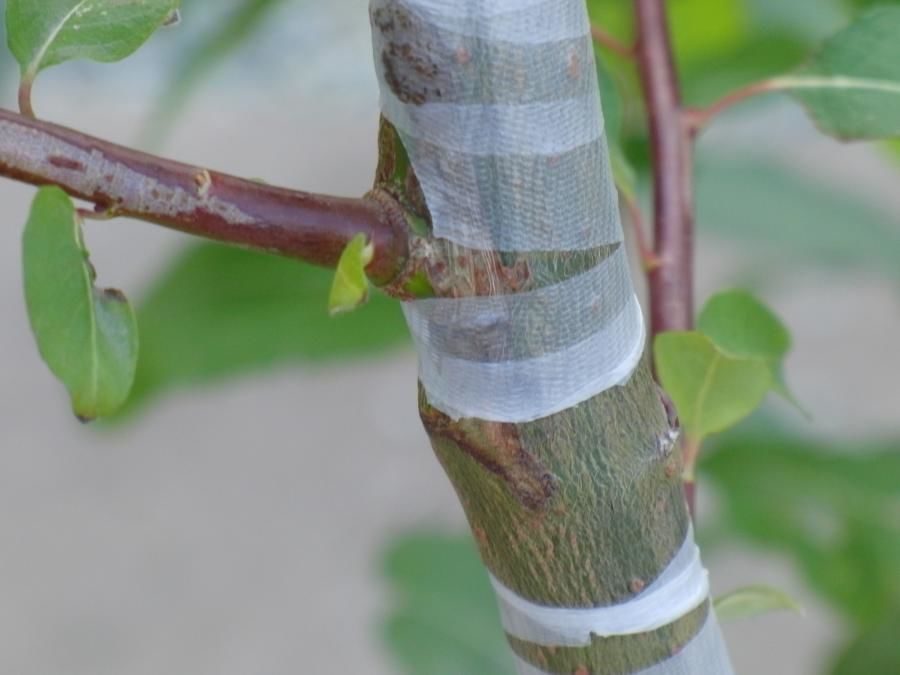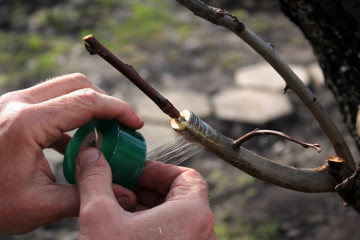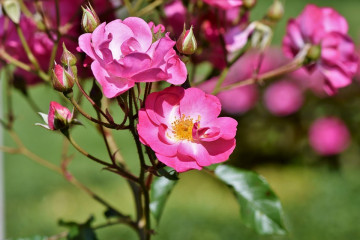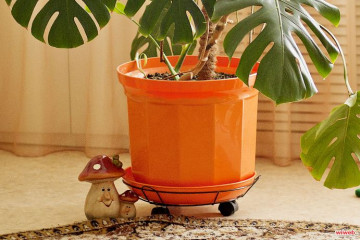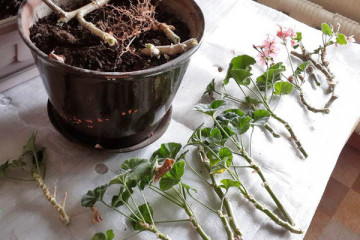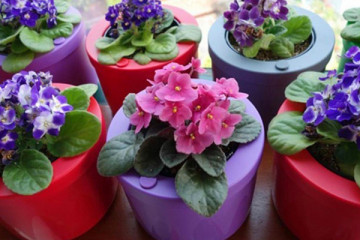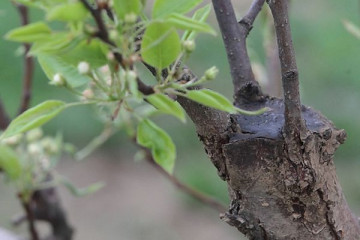How to plant a pear in the summer for beginners step by step
Content:
Grafting for fruit plants is considered a very useful manipulation. The article contains the most important advice from professional gardeners, telling how and on what a pear is grafted, what schemes can be used and how to then care for the tree.
Need for vaccination
There are a number of important reasons why you need to plant fruit trees. It:
- Splitting and breaking branches. Over time, as well as under negative weather conditions, plants become weaker and they need additional care to maintain good condition and, accordingly, yield. Vaccination is the salvation of a damaged pear and its rejuvenation.
- Cultivation of new varieties of pears - more persistent and less whimsical. The grafting material can also improve the palatability of the fruit.
- Saving space in the garden by planting other crops on the pear. Through grafting, gardeners are switching to a more modern method of planting young trees.
When to vaccinate
Spring is considered the right time for vaccination activities. With the onset of stable heat and melting snow, experts note a high degree of survival of the new culture. The operation must be completed before the time of sap flow, otherwise the plant may suffer greatly. Pear budding in summer is carried out most often in July and less often in August, the survival rate is slightly lower than in the spring season, but also quite good - from 75%. The main condition is the closure of the scion site from the active rays of the sun.
In autumn and winter, the procedure is carried out as a last resort. During this period, the tree is at rest, all processes in it are slowed down, and nutrition is supplied only to the root, not reaching the crown. Therefore, another culture is unlikely to be able to take root. In addition, there is a serious risk for plants to freeze and die.
Matching pear rootstocks
The ideal option is to graft the pear on other varieties of this tree - semi-wild, but also growing favorably in the current climate. The other plants listed below are possible as rootstock, but the success rate of such grafting will be low.
Plum and cherry plum
Cherry plum is better grafted onto the pear. The material is prepared after the end of frost. A small tree grows, which is in good health and quickly begins to bear fruit.
On the black mountain ash
The rootstock is used to improve the quality of pear fruits and in the presence of a situation where the tree grows on not very suitable - swampy land. The finished tree will have a comfortable, small crown. Subsequently, tying up the shoot will be required.
On irgu
Grafting pears with irgi, chokeberry or quince material can only give undersized trees. Over time, the size of the young plant will be different than the stock and you will have to build a frame for the plants.
To the apple tree
An unusual tree will turn out if you combine a pear with an apple tree.It will be possible to observe both apples and pears at the same time. Many gardeners succeed in such a vaccination, but there is a risk of a negative result. The procedure is performed according to 2 schemes: by copulation or by means of a T-shaped cut.
Hawthorn
Thanks to the use of hawthorn, the pear becomes less whimsical, acquires resistance to drought. The plant begins to bear fruit early, they are large in size and rich in taste. Thorns will appear on the finished plant.
On the cotoneaster
The cotoneaster allows you to get a frost-resistant pear at the exit with a tart fruit taste that can grow on different soil. The cotoneaster seedling easily adapts to the climate.
Into the wild
With a combination of wild and pear plant, there are good chances of getting a frost-resistant, unpretentious culture in care, which, moreover, has a large and strong root. However, the pears will be small. The method of grafting with a graft is widespread.
Required tools and materials
Useful as tools:
- Oculus knife.
- Gardening scissors.
- Electrical tape (or cloth bandage).
- A clean rag.
- Disinfectant.
Vaccination methods
There are several simple step-by-step schemes that can be used to inoculate a pear. However, for each individual case, a different method is selected. So, modern copulation is better suited for working with a young tree with immature branches. In the spring, gardeners graft the pear plant by the bark. Beginners should give preference to the simple method - with the help of a peephole.
Spring grafting of pears for bark
To curl a pear, the size of the area in which does not coincide with the size of the grafted plant, the following method is used:
- Waiting for a period of warming outside. In this case, you need to be in time before the moment of sap flow near the tree.
- Separate the bark at the trunk of the pear in such a way that a small pocket of about 5 cm is obtained.
- A prepared stalk is inserted inside. The graft should have a sharp edge.
- The work is secured with tape. From above, you can additionally wrap it with a film that will protect against negative external influences.
Into the cleft
It happens like this:
- The stem of the pear is cut off: a stump of about 20 cm should remain.
- The cut is split in the center - 5 cm deep.
- For convenience, a wedge is inserted. 1-2 cuttings are placed from opposite edges, having oblique cuts of 3-4 cm in length.
- The wedge is immediately removed. The graft area is smeared with garden varnish.
- A fastening bandage is made.
Side cut
Lateral grafting consists of the following steps:
- A section of a tree at a height of 10 cm from the ground is cleaned of branches and wiped with a cloth.
- A cut is made with a knife in the form of a "T" and is 3 cm long.
- A shield is cut off from the grafted plant with a special budding tool. The parameters of the slices must match perfectly.
- The bark of the T-shaped incision is gently opened to accommodate the new kidney.
- The place is pressed by hand and tied with a ribbon. The kidney should remain on the surface, the shield should be under the bandage.
The budding in the butt is similar to the described method, but instead of a T-cut, a shallow side cut is made in the stock.
Cuttings
Another well-known, but rather rare method is ablation. It is suitable only for young plantings and includes the following stages:
- Preparation of scion and rootstock sites: cleaning their top layer.
- The cuttings are connected by the necessary sections.
- A tight bandage is applied to the area of their contact, which will need to be removed after several months.
Rules and recommendations for the pear grafting procedure
Based on the described vaccination procedures, some general conclusions can be drawn:
- The harvesting of buds or cuttings is carried out in advance: the branches you like are selected and cut off. In the warm autumn or at the end of winter and the beginning of the spring season, it is possible to collect high-quality material for vaccinations.
- If there is a choice of rootstock, graft the pear on a different variety of pears, as other plants are less likely to take root.
- Spring and summer pear grafting is done, at other times of the year it is better to refrain from such stressful events.
- The procedure is performed accurately, exactly according to the instructions.
- A special knife is used for the operation. In no case are tools such as an ax, drill, awl, etc.
Vaccination in different regions
Specialists allocate different terms for the procedure in Russia, depending on the place of residence. So, in the south, the favorable period begins in February-March, in the middle part and in the north-west of the country - from mid-spring, in the Urals, in Siberia - from the end of April to the 2nd half of May.
Northern regions
A specific vaccination schedule must be followed in the northern regions. Buds here are formed in June, in August their possible number can reach 10-15. Due to the more severe climate, it is not worth waiting until all the eyes of the pear are ripe. The specificity of growing fruit trees is also the constant movement of juices. Therefore, for example, in the Urals, they begin to graft a pear at the end of April, the deadline is 3 quarter of August.
Newbie mistakes
When performing the procedure, it will be useful for novice summer residents to know what to avoid:
- Stretching the time of the event. If the cut takes a long time, it can dry out and oxidize in the process.
- Using a bad putty (var).
- Applying an insufficiently tight bandage. Untimely weakening of the fixators during the development of the vaccine begins to squeeze the bark.
- Incorrect position of the grafted plant.
- Removing branches from the stock, which can be a possible cause of the death of the vaccine.
- Poor quality, not sharpened tools.
Caring for a pear after vaccination
At first after the procedure, it is very important to carefully monitor the condition of the pear. After about a couple of weeks, the tree needs to be inspected. So, provided that the kidney is not dry and has a pleasant greenish color, one can conclude that the procedure is successful. Usually in November, the harness made is removed, however, if it is laid neatly and does not squeeze the plant, then it can be left until the spring period.
In the spring, until the buds are swollen, the grafted plant must be cut 1 cm above the graft site. The cut is coated with a special pitch. During the spring and summer months, it is necessary to carry out systematic watering, loosening the earth next to the pear trunk, and removing weeds. The tree is transplanted to a separate site after a year has passed since the operation.
Before the grafting procedure itself, you need to carefully study the materials, ask gardeners about all the nuances of how to plant a pear. Knowledge and practical skills guarantee 90% of the event's success.

